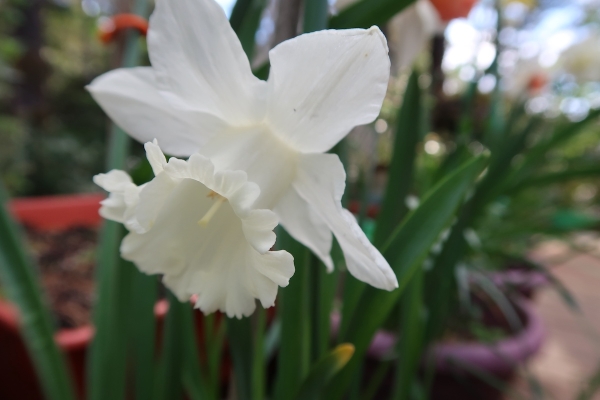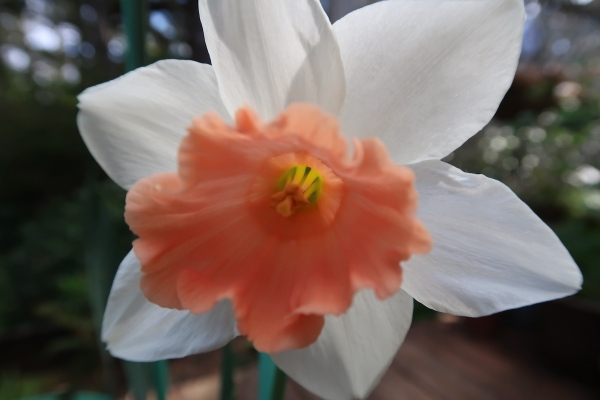Happy May, Everyone!
It's finally starting to look more like spring around here, although it's still a bit chilly and windy. One of the highlights of living in Florence, Oregon is the amazing array of rhododendrons that burst into bloom each spring in a dazzling array of colors. Our annual Rhododendron Festival will be happening mid-month with an old-fashioned parade, a carnival and a huge rhododendron sale. It promises to be lots of fun! Not-so-fun is a health issue that came up recently, and I'm scheduled for surgery May 13th. I'll get reviews done as I can, but if you notice that MainlyPiano isn't as active as it usually is, that's why.
Carl Czerny was one of the most prolific composers ever. Many piano students are familiar with his many books of finger exercises, but he also wrote volumes of more serious music. He published at least 304 pieces built on songs from 87 operas, as well as those from ballets. His output apparently reached Opus 1000! He wrote music from four different writing desks, and would work on one piece to the end of a page, and then move on to another while the ink dried. When he died, he left a large part of his fortune to an institution for deaf-mutes.
The term "recital" first appeared in print in the announcement for a concert by Franz Liszt on June 9, 1840. It was laughed at in the beginning ("how can one recite on the piano?"), but the term has lasted through the present day.
On the average recording of a well-prepared classical musician playing difficult music, there can be as many as 200 to 600 "edit points" (mistakes or flaws) in a sixty-minute program. A producer who has worked with some of the finest musicians in the world (Vladimir Horowitz, Itzak Perlman, etc.) says he has never produced a recording with fewer than 100 "edit points."
New Reviews: It seems like the music I review gets more varied by the month - and I really enjoy that! There's even a new album from George Winston (his second posthumous album) that's a tribute to one of his favorites, Professor Longhair! Quite a few of the featured albums and singles are from artists who are new to the site, which is also exciting! Steve Yip reviewed
Ella Fitzgerald: The Official Graphic Novel, so there is plenty of new "stuff" for you to peruse! You can find them all
here.
Jonas Chickering (1796-1853) was the founder of a Boston firm that would become the first major American piano manufacturing success story. Chickering's pianos earned international praise and fame, and they were the first to introduce a design change that made American pianos distinctly different from European instruments - the use of the one-piece cast-iron frame.
The Steinways began their careers in America working for other piano manufacturers while learning American manufacturing techniques. By 1853, they regrouped to form Steinway and Sons and began to make square pianos.
Many advertising campaigns have catchy slogans. For years, music publishers used "brilliant, but not difficult" to describe their sheet music selections - mostly to appeal to the female players who were never supposed to play really well (that was up to the men!!!). The phrase first appeared in a music newsletter in 1801.
New Interviews: I didn't have a chance to do any new interviews in April, but I hope to get back to it in the second half of May or in June. Guitarist/composer Michelle Qureshi is up next!
At the London trade exhibition on 1851, there was a bed with a piano built into it that would play itself when someone laid on it.
Yamaha started making articles other than pianos out of leftover piano and organ parts. In 1932, Yamaha made 4000 pianos; 20,000 organs, almost 3 million harmonicas; and 369,000 square meters of veneer; as well as mantelpieces and airplane propellers.
Square pianos were the most popular style of pianos in American homes in the early 1800's. This was at least partly because their shape was the easiest to move by covered-wagon - the primary means of transporting goods for greater distances at that time.
May Birthdays: Here are some of the musical birthdays this month:
1: Lisa Downing, David Lewis & Joseph Nimoh
3: Kathleen Ryan & Calvin Jones
6: Louis Landon
7: Grayhawk David Gibney & Jim Combs
9: Josh Winiberg
10: Luis Berra
11: Clifford Borg & Richard Shulman
12: Joe Kenney
16: Reis Taylor Dixon & Trysette Loosemore
18: Gregg Karukas
20: Michael Borowski
22: Michelle Qureshi
23: Kostia Efimov
24: Igor Lisul
25: Adam Andrews
28: Peter Kater
29: Ira Stein
31: Shambhu Vineberg & Jeff Oster
Happy Birthday to all of you!!!
Wurlitzer introduced its first electric piano in 1955.
When Napoleon III was married, Queen Victoria gave him a piano that was built in the shape of his hat. It is still in a museum in Tokyo.
The oldest piano still in existence was built in 1720 by Bartolomeo Cristofori (1655-1731) who is considered to be the "inventor" of the piano.
May Musical Holidays and Observances:
In addition to Mother's Day and Memorial Day, here are some May celebrations.
All Month: International Drum Month
Weeks: Great American Brass Band Week - May 29 - 31
Weekends: Old Time Player Piano Weekend & National Polka Weekend - May 23-25 (Memorial Day Weekend)
5/2: National Play Your Ukulele Day & National Tuba Day (interesting combination!)
5/3: National Public Radio Day
5/4: Dave Brubeck Day
5/6: National Concert Day
5/10: World Belly Dance Day
5/14: National Chicken Dance Day & Stars and Stripes Forever Day
5/15: Relive Your Past by Listening to the First Music You Ever Bought No Matter What It Was No Excuses Day
5/17: World Fiddle Day
5/20: National Band Director's Day
5/21: World Fiddle Day & Sing Out Day
5/22: Buy a Musical Instrument Day
5/23: National Title Track Day
5/24: International Jazz Day
5/25: National Tap Dance Day & Sing Out Day
5/26: World Lindy Hop Day
5/27: Old Time Player Piano Day
5/30: Hole In My Bucket Day (!!!)
The first foot-operated damper (sustain) pedal was built by John Broadwood of London in 1783.
Clara Schumann was the first pianist to make a practice of playing from memory in public, in about 1840. Before her, it was considered an insult to the composer to play without the written music.
Torakusu Yamaha built his first piano in 1899 - the same year that Scott Joplin published "The Maple Leaf Rag."
Okay! That's it for the May issue! This month's photos are of some of the April blossoms in my yards. Expect some new rhododendron shots in June! Have a great month!
Kathy
Upright pianos come in four sizes. A full upright must be at least 48" tall; a studio upright is 44"; a console is 39"-42" tall; and a spinet is 36"-38". A few piano makers are putting bigger wheels on their pianos so they can say they are taller! The first upright piano was built in 1800 by Mathias Muller (who also took out patents on railroad tracks and propellers).
The original upright pianos were about 15% more expensive than the grands. They were also about 7 1/2’ tall, very top-heavy, and were inclined to tip over with a real crash! They were often referred to as "giraffes.”
The first damper pedal was a lever operated by the knee.

Pansy

Daffodil

Petunia

Daffodil
To the best of my knowledge, the "trivia" items are true, but I can't guarantee it.







